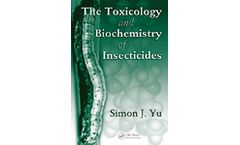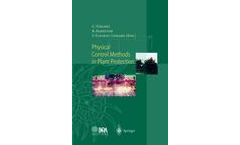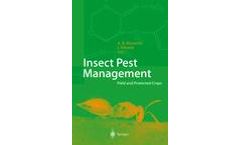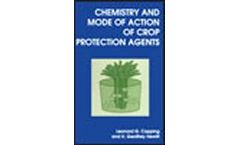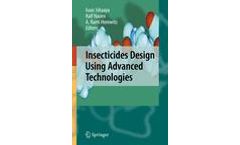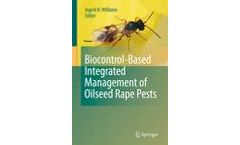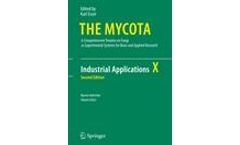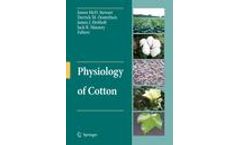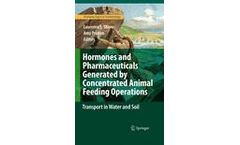Refine by
insecticide books
17 books found
The nicotinoids are the most important new class of pesticides, joining the organophosphorus compounds, methylcarbamates, and pyrethroids as the major insecticides. Recently, imidacloprid and related nicotinoids have begun replacing organophosphorus and methylcarbamate compounds as insecticides to control insect pests on major crops. ...
15 papers address: the use of entomopathogens to control insects; the effects of formulation and aerial application techniques on microbial insecticides; laboratory sprayers used to evaluate the compatibility of tank mixes; effective control of aquatic pests; and selection of appropriate carriers for water-dispersible ...
The first book in two decades to address this multi-faceted field, The Toxicology and Biochemistry of Insecticides provides the most up-to-date information on insecticide classification, formulation, mode of action, resistance, metabolism, environmental fate, and regulatory legislation. ...
Jointly published with INRA, Paris.Pesticide resistance is becoming more frequent and widespread with more than 500 insect species known to have become resistant to synthetic insecticides. On the other hand, consumers increasingly demand agricultural products without any pesticide residues. ...
Emphasis is placed on novel biological insecticides which block certain stages in the development of pest insects. Special attention is given to insecticides with selective properties. Their role in integrated pest management programs and in ...
In past decades, government policies encouraged the control of rice planthoppers with synthetic pesticides, a tactic which promoted insecticide resistance and often led to the pesticide-induced resurgence of ...
It starts with an overview on general topics in pest management, i.e., the efficacy and selectivity of new biorational insecticides such as insect growth regulators, avermectins, the neonicotinoid insecticides, and the ecology of insect pests and relevance to pest management ...
Over the past 30 years one alarming trend is the emergence of plant species resistant to agrochemicals (e.g. insecticides, herbicides, fungicides). Considering the fact that these pesticides are crucial to human health and to food, feed and fiber production, impressive research was carried out during the last decade to understand the mechanisms of resistance development. ...
This book examines the chemistry and mode of action of herbicides, insecticides, fungicides and plant growth regulators. It follows crop protection strategies from early discoveries to the present day, emphasising the biochemical targets of the compounds discussed. ...
In the past, insecticide development has been guided mostly by chemo-rational and bio-rational design based on understanding of the physiology and ecology of insects and crops. ...
FIFRA Basic Practice Series, ABA ...
FIFRA Basic Practice Series, ABA ...
It is attacked by unique complexes of insect pests still largely controlled through the application of chemical insecticides. Crop management systems for the future must combine sustainability with environmental acceptability to satisfy both social and economic demands. ...
An Historical Perspective of Ancient Poison (Cutler). Plants and Plant Products Used im Mummification (David). Plants Used Medically by Indigenous Peoples (Lewis). Plants as Sources of Medicinally and Pharmaceutically Important Compounds (Kinghorn). SocioEconomic Poisons (Brenneisen, ElSohly). Antiparasitic Agents from Plants (Borris, Schaeffer). Antifungal Compounds in Plants (Kuc). ...
This volume gives a survey of the state of the art in the traditional fields of industrial mycology as well as of selected novel applications of fungi. The first section deals with the use of fungi in the production and processing of bread, cheese, beer and wine, traditional Asian fermentation products and edible mushrooms. The second section is devoted to the production of fungal metabolites and ...
Cotton production today is not to be undertaken frivolously if one expects to profit by its production. If cotton production is to be sustainable and produced profitably, it is essential to be knowledgeable about the growth and development of the cotton plant and in the adaptation of cultivars to the region as well as the technology available. In addition, those individuals involved in growing ...
Hormones and Pharmaceuticals Generated by Concentrated Animal Feeding Operations: Transport in Water and Soil examines how hormones, antibiotics and pharmaceuticals generated from concentrated animal feeding operations (CAFOs) of cattle, poultry, swine and aquaculture are transported in water and soil. Little is known of the environmental fate of the tons of physiologically active steroid ...


